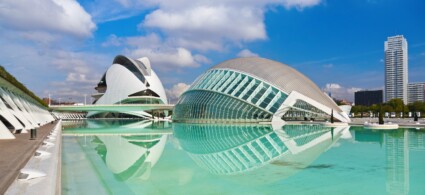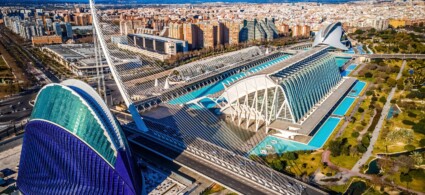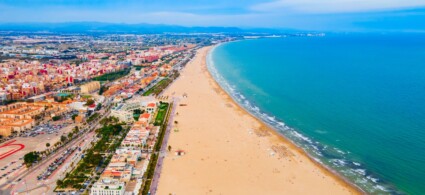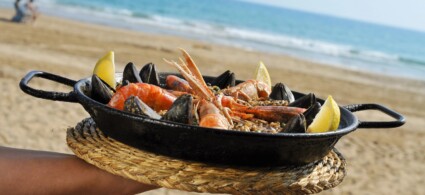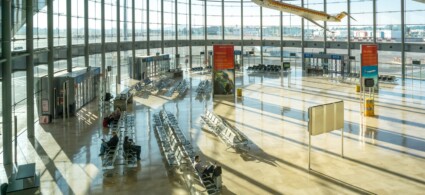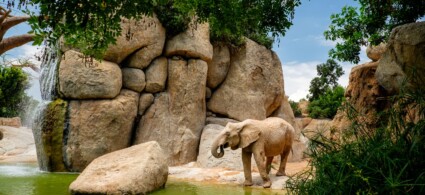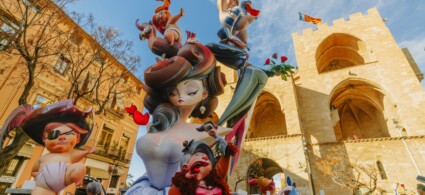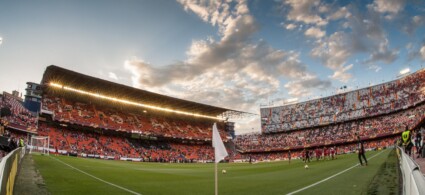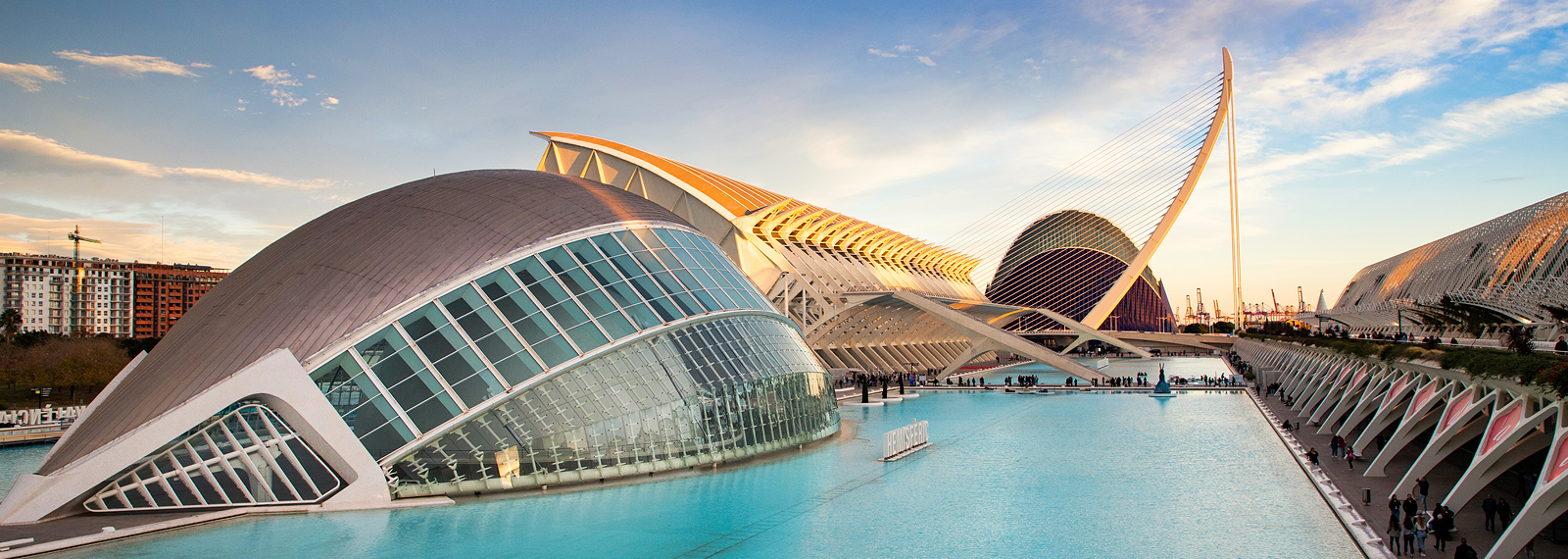

After Madrid and Barcelona comes Valencia. Spain’s third largest city fears no comparison with its two big sisters in terms of vitality, cultural ferment and traditions, but is happy not to be in the spotlight of mass tourism.
Carefree, relaxed and cultured but never snobbish, Valencia is a city blessed with an exceptional climate, favourably located along the east coast that makes travelling easy.
But why leave here? Valencia is a city full of attractions for tourists. A quaint and atmospheric Old Town contrasts with the futuristic City of Arts and Sciences designed by internationally renowned architect Santiago Calatrava, a native of Valencia.
His innovative, albeit very expensive and controversial, works and unmistakable style have certainly helped put Valencia back on the international map, but the city’s fame outside Spain is due to something quite different.
This is the birthplace of paella, the quintessential Spanish dish that Valencians take very seriously. Try getting the ingredients needed for a real paella wrong while discussing it with a Valencian and see his reaction!
Between fascinating cultural visits, exciting strolls through ultra-modern neighbourhoods, dinners of the best paella of your life and dips in the sea, a holiday in Valencia will allow you to relax and have fun.
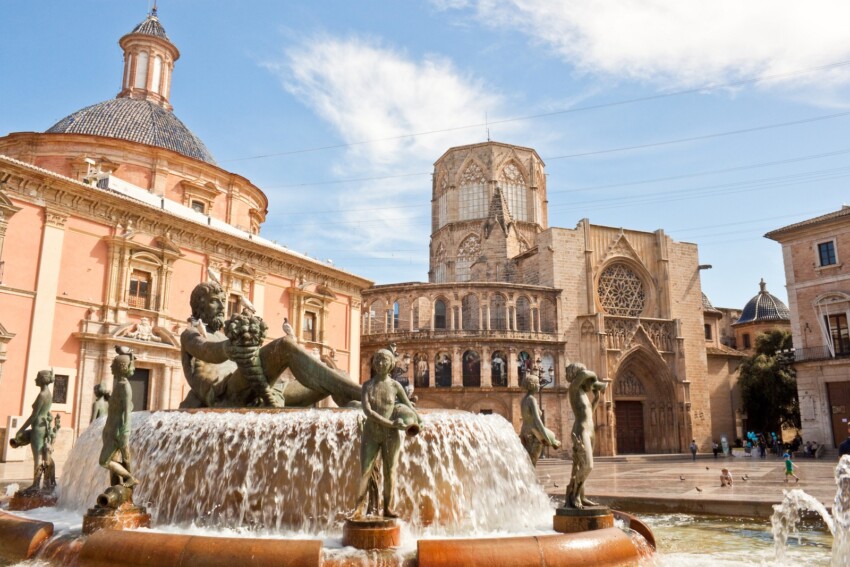
Valencia is a city full of museums, monuments, historical buildings, markets, squares, beaches… there are so many attractions to see and activities to do that you need at least two days to see the essentials. Among the must-see attractions, the first on the list is the futuristic City of Arts and Sciences, perched on the Turia riverbed and designed by Santiago Calatrava. Within this complex are numerous facilities all worth visiting, including the Oceanogràfic aquarium, the Science Museum, the Hemisfèric planetarium, the Umbracle promenade and the Palau de les Arts Reina Sofía multifunctional centre.
But Valencia is not only the City of Arts and Sciences. Walking through the historical centre, visit the Lonja de la Seda, a 15th-century palace built to house the silk market, now a UNESCO World Heritage Site, the Valencia Cathedral with its Renaissance decoration and beautiful frescoes of the Italian school, and the Central Market, with more than 300 vendors inside.
As for museums and art, Valencia offers a quantity and variety of museums to satisfy every interest and curiosity, including the Museo de Historia de Valencia, which traces the more than 2000 years of history of the city of Valencia and the region of the same name, the Museo Nacional de Cerámica entirely dedicated to the ceramics and porcelain industry, the Museo de Arroz, dedicated to an important economic activity of the region, namely rice cultivation, and the Museo del Corpus, a fascinating collection of objects used in the traditional Corpus Christi processions and celebrations.
If you don’t know which attractions to visit, follow our 3-day Valencia itinerary.
Discover Valencia through the eyes of expert guides who will take you on a tour of the city's hidden treasures. Participating in a guided visit or a free tour will allow you to capture the true essence of Valencia.
The free tours are a viable alternative to traditional guided tours. They work like this: participation is free and at the end of the visit you can leave a tip at your discretion. Below you will find our favourite free tour, otherwise you can see the full list by visiting this page.
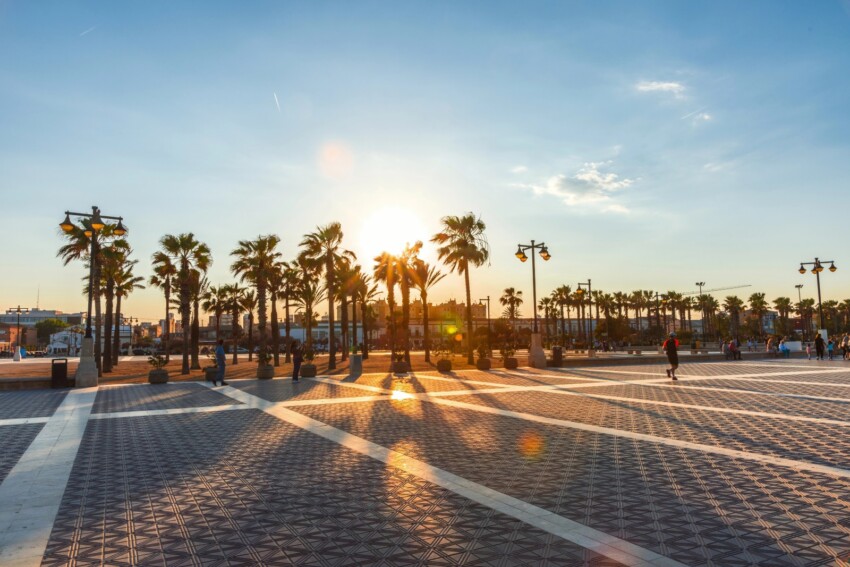
Furthermore, Valencia is still a city by the sea, which is why during a visit to the city – especially during the warm season – don’t miss its beaches. The city beach par excellence in Valencia is Playa de Las Arenas, the closest to the city centre: it is a typical beach with a long line of hotels and restaurants behind it. North of Playa de Las Arenas begins Playa de la Patacona, quieter because it is further from the city. The most famous beach in Valencia is probably Playa de la Malvarrosa, a fine sandy beach over a kilometre long and very wide. Equipped with all services, it is very crowded in summer.
Between La Malvarrosa and the Juan Carlos 1 marina, scene of the epic challenges of the 2007 America’s Cup, stretches Playa El Cabañal-Arenas, a favourite of the Valencians who have elected it as their favourite because of its fine sand, calm and tranquil waters, palm-shaded avenues and excellent paella restaurants.
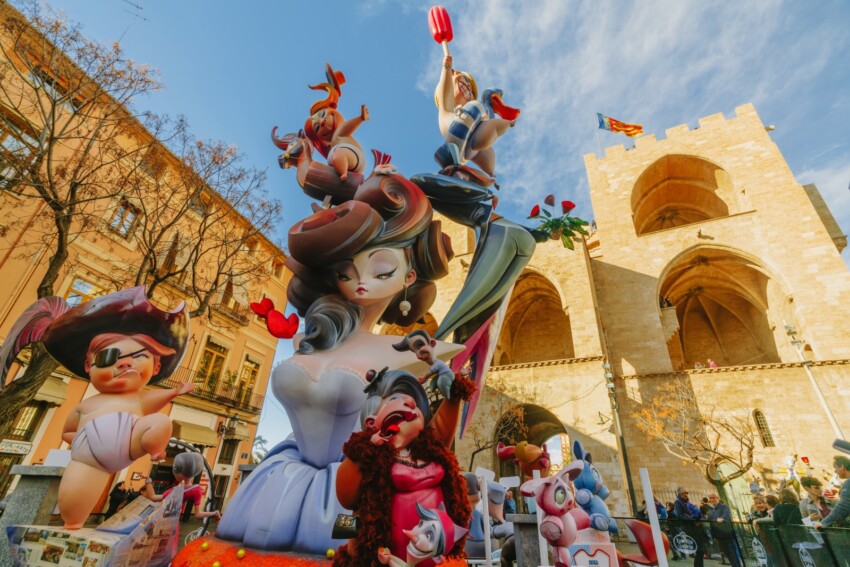
Dynamic, modern and exciting, but also deeply in love with its history and traditions, Valencia is a city that doesn’t cut corners when it comes to organising events. It does it big, both in terms of numbers and spectacularity, and it does it with passion.
The event that no Valencian can miss is Las Fallas, more than a festival a fantasy world with its rituals and characters. Tourists see the spectacular and fun side of it, but in reality it is a tradition with deep meaning, not without ties to religion. Penetrating the complex symbolism of Las Fallas in a short holiday is impossible, but the unique atmosphere experienced during those days is a good reason to come to Valencia.
The villages around Valencia are no less impressive. The small village of Buñol has become a worldwide tourist attraction since word got around that the Tomatina takes place here, a bizarre but irresistible festival during which crowds of people throw tomatoes at each other in the streets of the city.
Valencia is also home to world-class sporting competitions, exciting challenges that will delight all sports lovers.
Valencia is a very large city and choosing where to stay is an important factor in planning an unforgettable holiday.
Typically, there are three areas where hotels and B&Bs are concentrated: the Old Town, more characteristic and full of charm; along the coast, a choice that allows you to combine a bit of sea and sightseeing; the vicinity of the ultra-modern Ciudad de Las Artes y de Las Ciencias complex, preferred by those who love contemporary architecture and want to immerse themselves in the avant-garde atmosphere of modern Valencia.
Don’t rule out the suburbs a priori, as cheaper accommodation can be found there: thanks to the metro and buses, it is easy to get from one part of the city to another, so if the offer is interesting, it may be a good idea to sleep outside the centre.
Finally, remember that in addition to a wide choice of hotels and b&b’s in all price ranges in Valencia you can also find numerous flats and holiday homes: these are particularly suitable for families and groups of friends.
Manises Airport, just 8 km from the centre of Valencia, is connected by direct low-cost flights from all over Europe; from the airport you can easily get to the centre by metro and bus.
Valencia is in a fantastic location from which it is easy to get around: from here it is easy to reach all major Spanish cities by public transport or hire car.
Madrid is only 300 km away and you can reach your destination in only 95 minutes by high-speed train. These are usually a bit expensive, but if you book in advance you can find good offers.
A cheaper alternative is the bus, which, however, increases the travelling time enormously.
Valencia is located on the east coast of Spain, overlooking the Balearic Sea on the Gulf of Valencia. The capital of the Comunidad Valenciana, it is located on the banks of the Turia River.
City Card allow you to save on public transport and / or on the entrances to the main tourist attractions.

